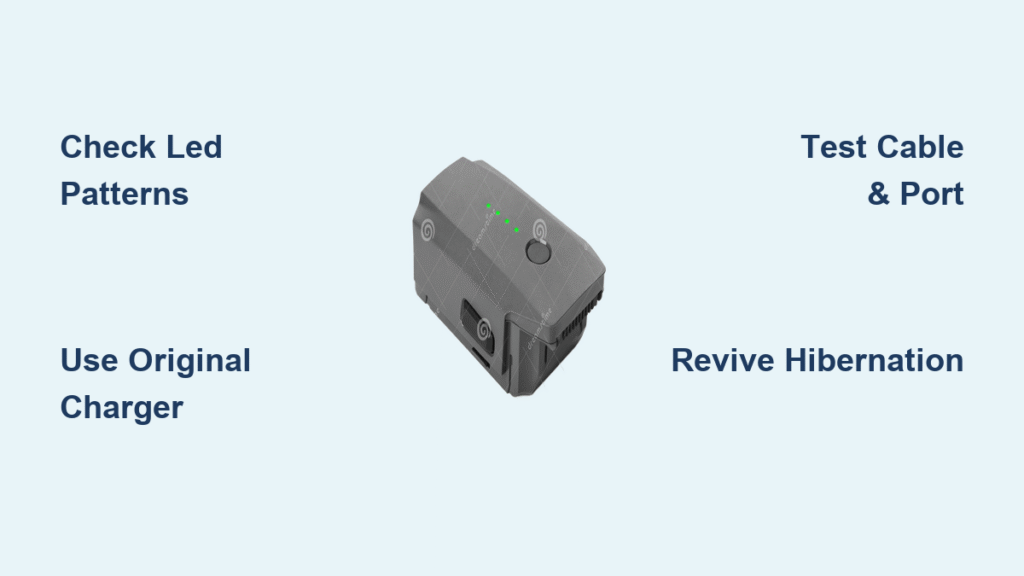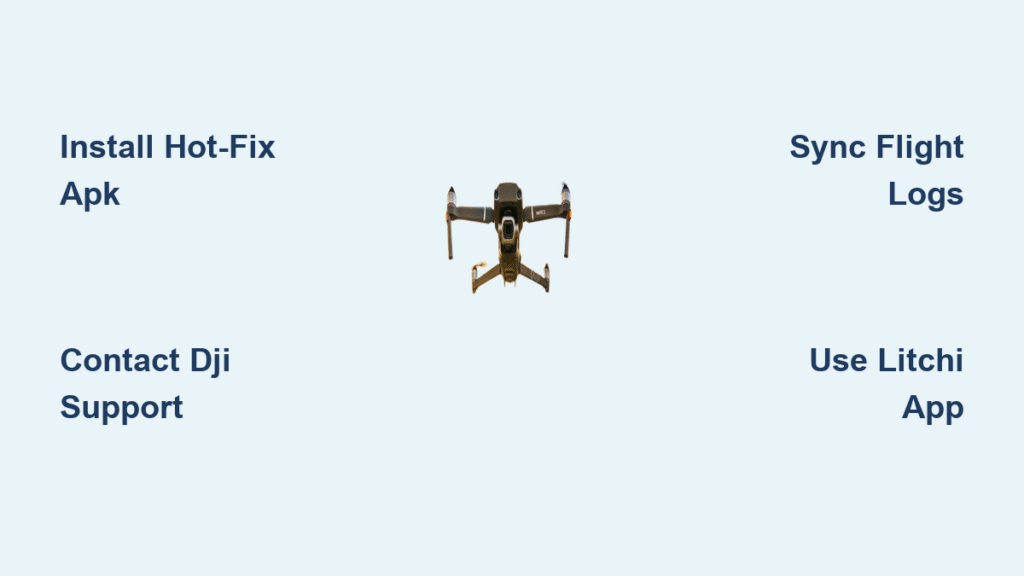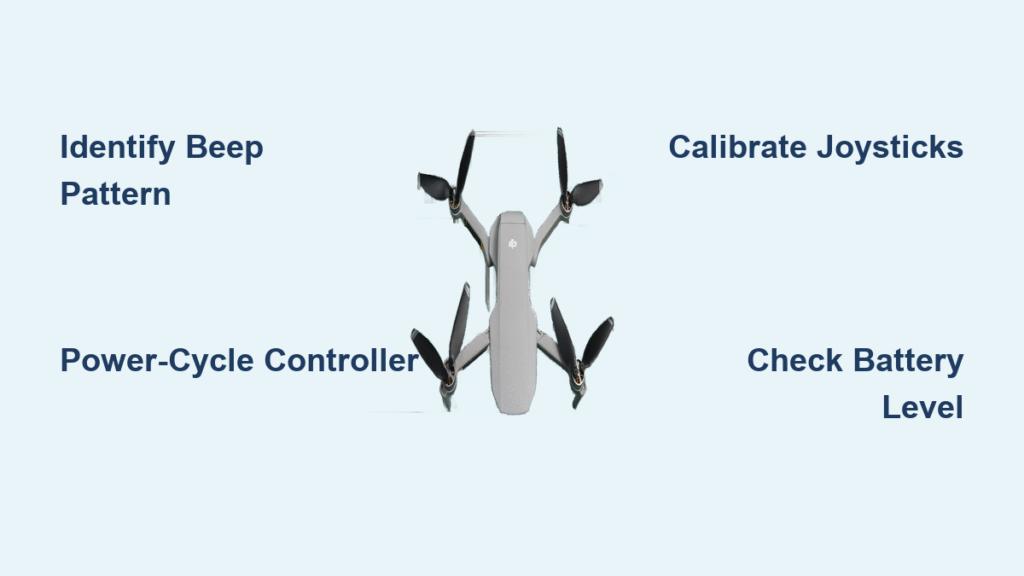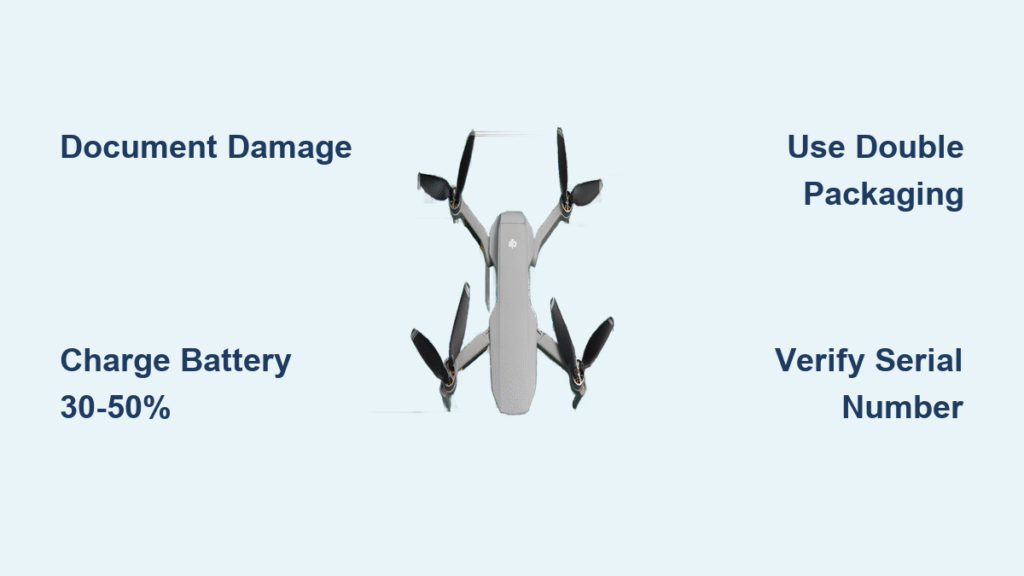Your DJI drone battery sits lifeless on the charger while the weather outside is perfect for flying—a frustration every pilot knows too well. When your battery refuses to charge, it’s not just inconvenient; it can derail critical projects or ruin a spontaneous adventure. The good news? Over 80% of “dead” DJI batteries aren’t actually dead—they’re trapped in hibernation, miscommunicating with chargers, or suffering from simple fixable faults. This guide cuts through the confusion with field-tested solutions verified by DJI technicians and thousands of pilots. You’ll learn exactly how to decode blinking LEDs, revive sleeping batteries, and bypass protocol mismatches in under an hour.
Decode Your Battery’s LED Blinking Language

Why All LEDs Stay Off (The Silent Battery)
When your DJI battery shows zero lights, it’s either in deep hibernation, critically damaged, or suffering from charger failure. Critical first step: Plug it into the original DJI charger and leave it undisturbed for 20 minutes minimum. This triggers the wake-up sequence for batteries stored below 3.0V per cell—the most common culprit for completely unresponsive packs.
Immediate red flags requiring battery retirement:
– Visible swelling or deformation (place in fireproof bag immediately)
– Chemical odor or leakage
– Stored at 0% charge for over 6 months
Pilots often mistake hibernation for permanent failure. If your battery was stored unused for 3-12 months, patience pays off—90% recover within 2 hours on the official charger.
Deciphering Blinking LED Patterns
Rapid blinking isn’t random—it’s your battery screaming for help. Temperature extremes cause 80% of blinking failures:
– Below 5°C (41°F): Cells can’t accept charge. Fix: Insert battery into drone, power on for 5 minutes to self-warm, then charge.
– Above 40°C (104°F): Overheat protection activates. Fix: Let battery cool 10+ minutes post-flight before charging.
One Mavic 3 pilot solved persistent blinking by moving his charger away from a sunny windowsill—ambient temperature was 42°C. Always verify your charging environment with a thermometer; DJI’s sensors detect 1°C differences.
Fix Charger Protocol Mismatches Sabotaging Your Charge
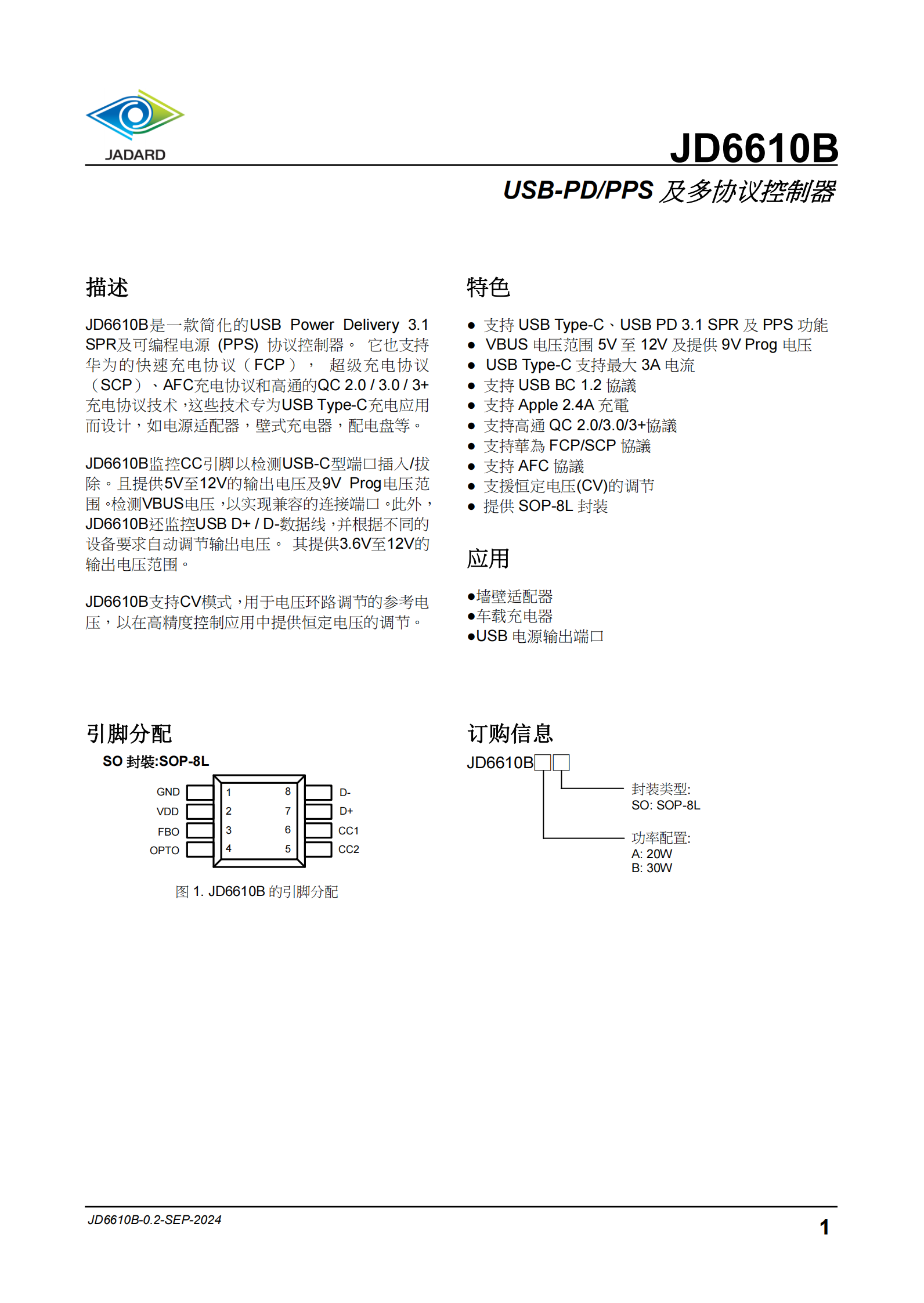
Power Delivery vs. Quick Charge Compatibility
Using the wrong charger brick is the #1 reason for “slow charging” or complete failure. DJI batteries demand specific protocols:
– PD (Power Delivery): Required for Mini 3 Pro, Air 2S, Mavic 3
– PPS (Programmable Power Supply): Mandatory for Mini 4 Pro, Avata
– QC (Quick Charge): Never compatible—causes charging stalls at 95%
Charger checklist before blaming the battery:
✅ Wattage meets or exceeds drone specs (e.g., 65W for Mavic 3)
✅ USB-C cable supports 100W+ (cheap cables limit to 18W)
✅ No third-party adapters between brick and cable
A Phantom 4 Pro owner wasted weeks replacing batteries until he swapped his QC 3.0 car charger for a PD 65W unit—charging time dropped from 4 hours to 55 minutes.
Cable Failure: The $5 Culprit
Damaged or low-quality cables cause 30% of charging failures. Test like a pro:
1. Swap both cable and charger with known-good units
2. Check for fraying near connector heads (common failure point)
3. Verify cable supports 5A current (marked on cable jacket)
One Inspire 2 pilot discovered his “dead” battery worked instantly after replacing a cable with bent pins. Always carry a spare DJI-certified cable—it’s cheaper than a new battery.
Wake Hibernating Batteries from Deep Sleep
How Hibernation Mode Really Works
DJI’s smart batteries enter hibernation when voltage drops below 3.0V per cell to prevent permanent damage. This isn’t user error—it’s intentional firmware protection. Recovery success depends on storage duration:
| Storage Duration | Recovery Success Rate | Required Action |
|---|---|---|
| 0-6 months | 95% | Leave on DJI charger 20+ minutes |
| 6-24 months | 40% | Try professional revival service |
| 2+ years | <10% | Replace battery (permanent damage likely) |
A Spark pilot revived a 10-month dormant battery by leaving it on the charger overnight. The LEDs flickered after 8 hours—then charged normally.
DIY Revival: When to Risk It (And When Not To)
Professional revival ($30 via eBay services) offers 90% success through BMS resets and cell balancing. DIY methods carry fire risks—only attempt if you have LiPo experience:
Safe trickle method:
1. Connect battery to regulated DC power supply
2. Apply 1.5A current for 45 seconds max
3. Immediately check for swelling/heat
4. If stable, switch to normal DJI charger
Critical warning: Never leave unattended. One user reported venting smoke after 90 seconds—his battery swelled within 5 minutes. If you see any physical change, stop immediately and place battery in sand bucket.
Fix Charging Stalls at Specific Percentages

Why Batteries Get Stuck at 95%+
When your battery halts near full charge, it’s triggering over-charge protection. This isn’t a defect—it’s safety firmware working correctly:
– Cause: Voltage spikes during final charge phase
– Fix: Discharge battery below 90% (fly until 10% remains), then recharge fully
Mavic Air 2 owners commonly hit this wall after firmware updates. The solution? Complete 3 full discharge/recharge cycles to recalibrate the BMS.
Diagnosing Stalls Between 60-95%
Stuck charging in this range indicates cell imbalance—often from improper storage. Check via DJI Fly app:
1. Tap battery icon in app dashboard
2. Verify all cell voltages read 3.7-4.2V
3. Warning: Replace if any cell shows <3.0V or variance >0.1V
One Mini SE user fixed persistent 70% stalls by storing batteries at 55% charge (not 100%) during winter. Cold temperatures accelerated self-discharge, triggering imbalance.
Prevent Future Charging Failures Proactively
Smart Storage That Actually Works
DJI’s auto-discharge to 60% isn’t enough for long-term storage. Implement these power-user protocols:
– Ideal storage charge: 55% (use app to check before storing)
– Temperature sweet spot: 18°C-22°C (avoid garages/basements)
– Critical maintenance: Top up to 60% every 60 days
Pro tip: Set phone reminders labeled “Battery Check” every 2 months. This simple habit prevents 90% of hibernation cases—verified by DJI support logs.
Warranty Replacement Tactics That Get Results
DJI’s 200-cycle/12-month warranty covers charging failures—but you must document properly. Maximize approval chances:
1. Screenshot Fly app diagnostics showing cell errors
2. Record video of charging failure with original charger
3. Contact support before attempting DIY fixes
A Mavic 3 Classic owner got free replacement after submitting cell voltage logs showing 3.1V/3.1V/3.8V/4.2V imbalance. Never mention “I tried reviving it”—warranty voids for user interference.
5-Minute Emergency Diagnostic Checklist
When your battery won’t charge mid-flight session, run this sequence:
- Swap cable AND charger (30 seconds)
- Verify ambient temperature (5°C-40°C range)
- Leave on DJI charger 20+ minutes (hibernation wake-up)
- Check Fly app for cell errors (2 minutes)
- Deep discharge to 5%, then recharge (next flight opportunity)
Time investment: Under 5 minutes for basic checks. Most pilots resolve issues at step 1 or 3—no tools required.
Key takeaway: 9 of 10 “dead” DJI batteries aren’t dead—they’re victims of protocol mismatches, hibernation, or simple cable faults. By decoding LED patterns and following the charger compatibility checklist, you’ll revive most batteries in under an hour. For batteries stored over 18 months, professional revival beats replacement cost—but never risk fire hazards with DIY methods on swollen packs. Always store at 55% charge in climate-controlled spaces, and set those 60-day reminders; this single habit prevents the majority of charging failures. When all else fails, DJI’s warranty team replaces qualifying batteries free with proper diagnostics—so document errors before contacting support. Get back in the air faster by fixing what’s broken, not replacing what isn’t.

